Seagulls across the globe are known for their scavenging of our hot chips, or any food we would like to share with them. The natural diets of gulls are quite varied; aquatic or not, alive or dead, they will eat it. Let’s take a deeper look into exactly what seagulls eat.
Seagulls feed on a variety of things such as crustaceans, insects, fish, mammals, and even birds. They eat live or dead prey, often taking advantage of mammal, bird, or fish carcasses that wash up on shore. The term for a diet such as this is omnivorous. Larger gulls have an even more varied diet.
Join me as I venture into the dietary world of seagulls. You will learn more about a gull’s diet than you ever thought you wanted to know. Grab a drink, hide your chips, and let’s get started…
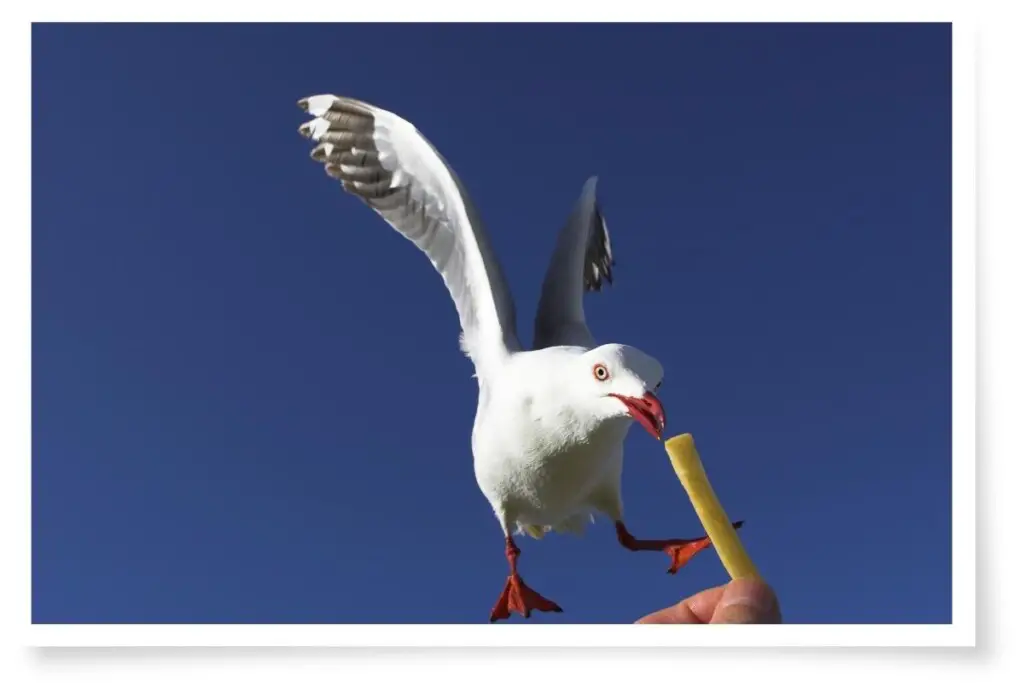
Are seagulls dumb? Find out in this post here on my blog.
Gulls Of The World
According to The Cornell Lab of Ornithology, there are over 50 species of gulls on the planet. They don’t all live in the same place and therefore don’t eat the same things.
It may surprise you but not all gulls live near the sea as the colloquial name “seagull” would suggest. Most of them live near coastal areas but some are pelagic meaning they spend most of their lives on the open ocean, only coming to shore to breed.
There are even some gulls who live in what are called xeric environments which contain little or no moisture at all. These gulls have to make a daily commute to water.
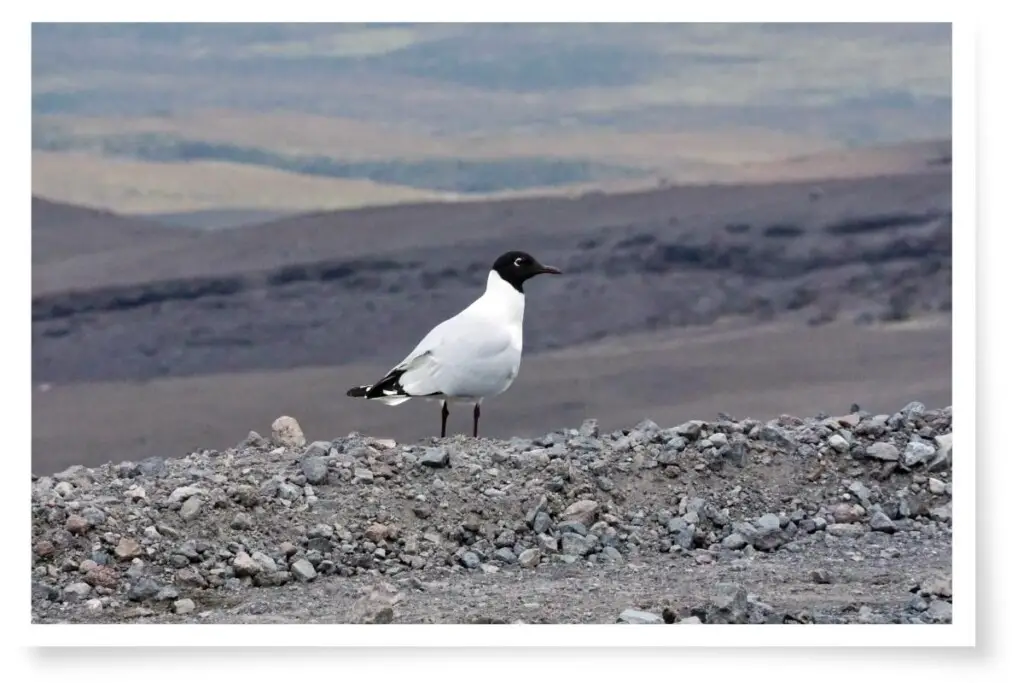
This diversity in habitat creates diversity in their diets. Let’s take a look at a few species and explore what they eat.
Bonaparte’s Gull
This is one of the smallest gulls in North America and is found across much of the continent. They are around 28-30 cm (11-11.8 in.) in length with a wingspan of about 90-100 cm (2.9-3.3 ft).
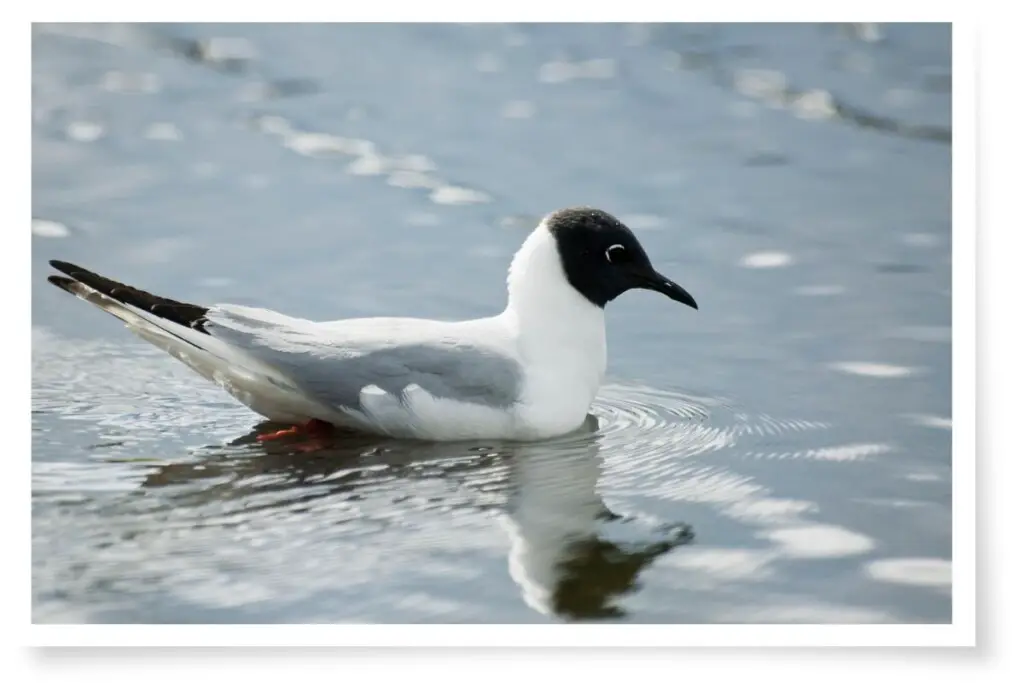
These gulls feed on crustaceans, snails, marine worms, grasshoppers, beetles, locusts, ants, and bees. In the breeding season, they will eat mostly insects, often catching them on the wing.
Small fish, shrimp, and other small invertebrates are also on the menu for these small gulls, especially when they are at sea.
Discover 10 fish-eating birds from Australia in this article.
Ross’s Gull
These dove-like gulls are found in northeastern Siberia, Greenland, and irregularly in northern Canada. They are around 29-32 cm (11.4-12.6 in.) in length with a wingspan between 82 and 92 cm (2.7-3 ft).
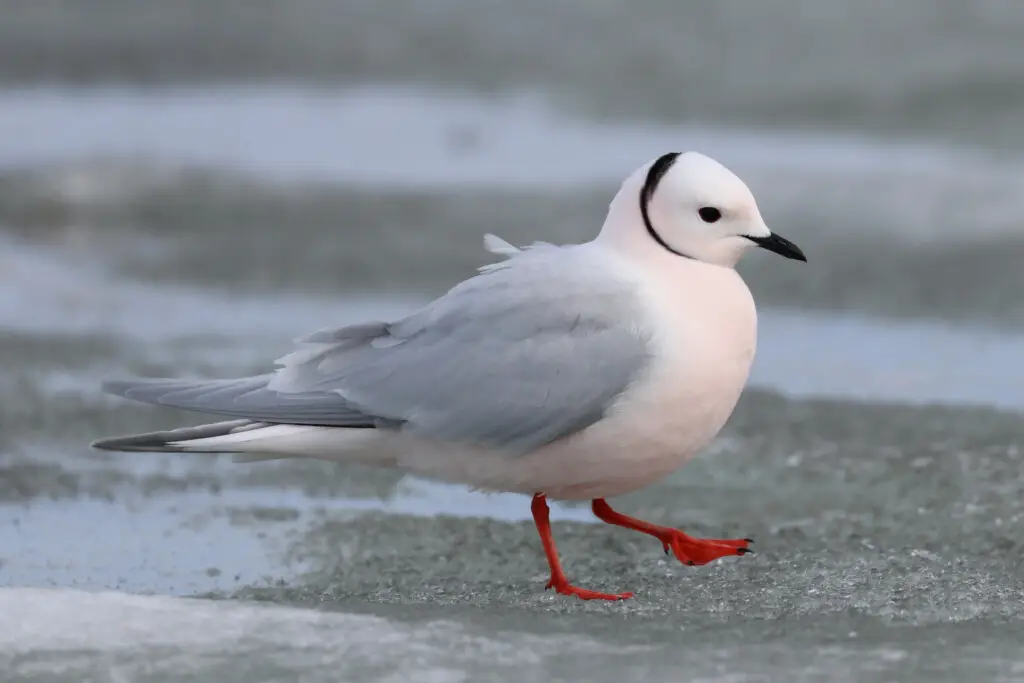
When breeding, these gulls eat mainly insects to gather the protein they need. When migrating and in the winter they feed on plankton, crustaceans, mollusks, priapulids (penis worms), and small fish.
Ross’s gulls have even been seen feeding on walrus dung. When you’re hungry I guess…
Dolphin Gull
Dolphin Gulls are a large species of gull endemic to the Patagonian region of South America. They are found on the southern coasts of Chile and Argentina, the Tierra del Fuego, and the Falkland Islands.

These gulls are around 40-46 cm (1.3-1.5 ft) in length with a wingspan between 104 and 110 cm (3.4-3.6 ft).
Dolphin gulls feed on carrion, offal, bird eggs, chicks, and marine invertebrates. They will scavenge around marine mammals for dead fish, placenta, and also feces. Breath mint, anyone?
SEAGULL FACT #1

Most gulls need nesting space free from vegetation while still safe from predators. This means breeding spaces can be overcrowded.
Do all birds lay unfertilized eggs? You’ll find the answer here in this post.
Pacific Gull
Pacific Gulls are even bigger than dolphin gulls at around 58-65 cm (1.9-2.1 ft) in length with a 137-157 cm (4.5-5.2 ft) wingspan. They are found in coastal areas of the southern half of Australia.
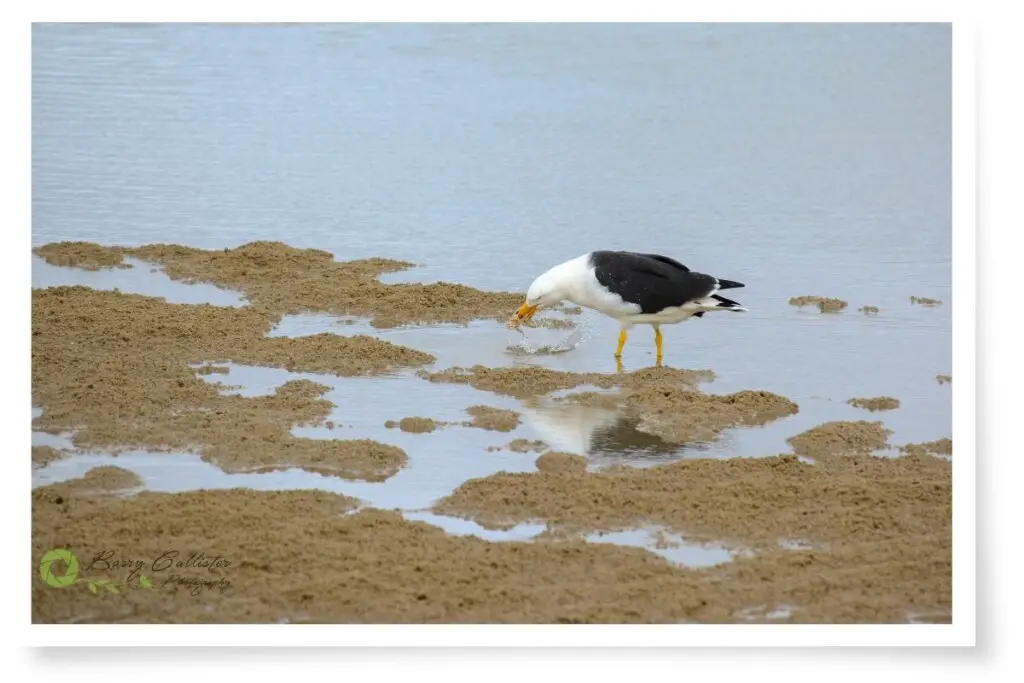
These gulls will eat fish, squid, intertidal mollusks, echinoderms, crabs, fish offal, carrion, and refuse. They will also take bird eggs, young birds, and even adult birds.
The Pacific gull in the image above is taking a crab at low tide in Inverloch, Victoria Australia.
Little Gull
These are the smallest gulls in the world at just 25-30 cm (9.8-11.8 in.) in length. They have a wingspan of around 70-78 cm (2.3-2.6 ft).

Little gulls will eat flying insects, small fish, and aquatic invertebrates. They will eat insects primarily during their breeding season and change to eating fish and invertebrates during the winter.
Swallow-tailed Gull
These stunning gulls are found in the Galapagos and the offshore waters of South America from central Columbia to central Chile. They are 51-67 cm (1.7-2.2 ft) in length with a wingspan of 124-139 cm (4-4.6 ft).
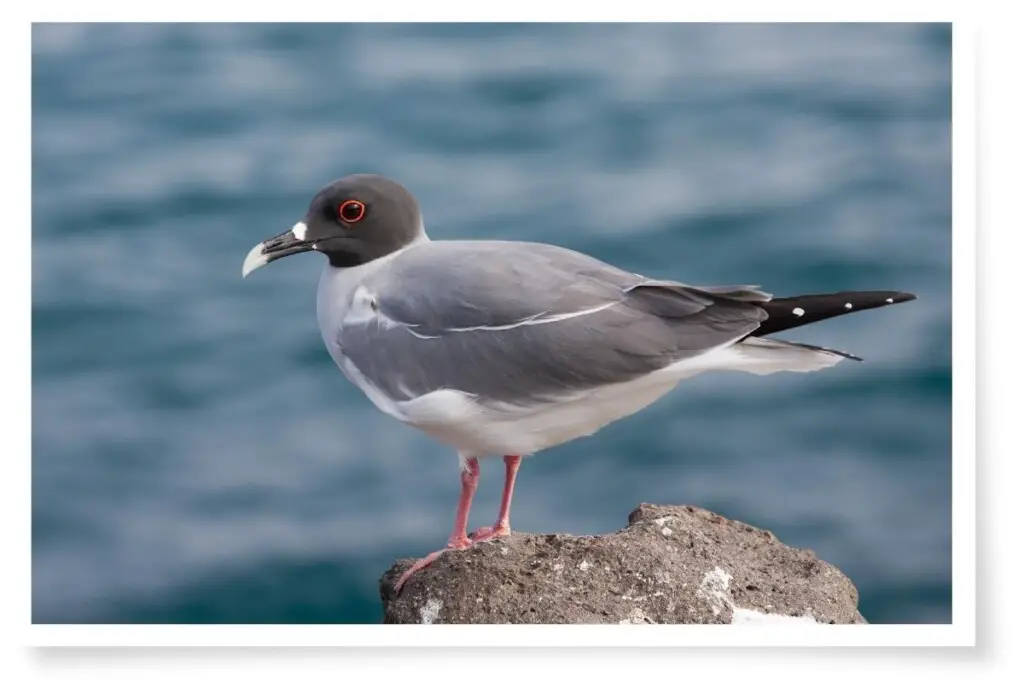
These gulls have the interesting behavioral trait of hunting at night; they are nocturnal, and their large eyes are adapted for this. They feed primarily on squid when they can be caught near the surface. They will also take clupeid fish.
SEAGULL FACT #2
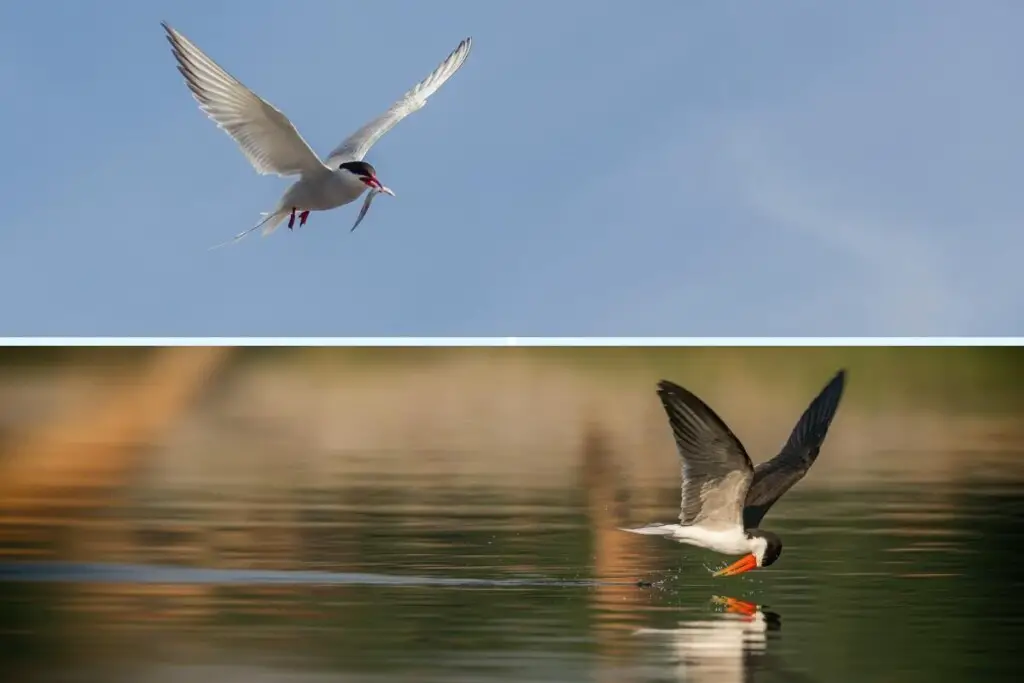
Gulls are in the same family as Terns and Skimmers. The Latin name for this family is Laridae.
Learn how birds communicate in this article here on my blog.
Red-legged Kittiwake
The red-legged kittiwake is a small gull around 35-39 cm (1.1-1.3 ft) in length with a wingspan of 60-70 cm (2-2.3 ft). These birds are only found on remote oceanic islands in just 4 locations in the Bering Sea off the coast of Alaska.
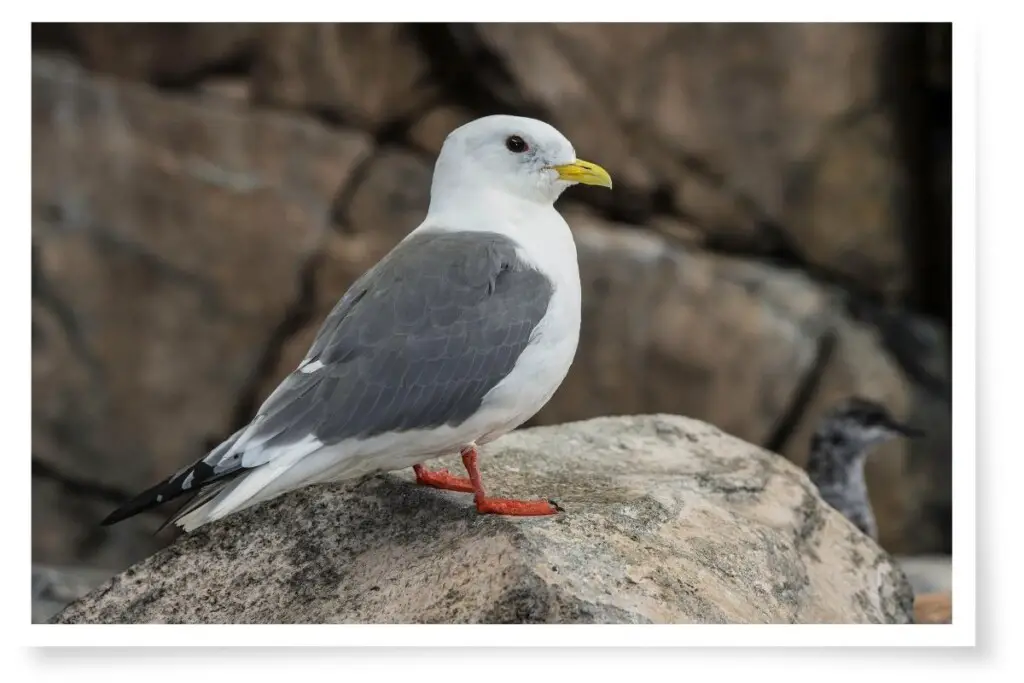
These gulls eat small fish and marine invertebrates. They feed within the top 0.5 m of the water, plunging or dipping to catch their prey.
As red-legged kittiwake have larger eyes than black-legged kittiwake, it is thought they may be predominately night feeders.
Ivory Gull
These birds are found in remote and desolate regions of the high Arctic. They are medium-sized gulls around 40-43 cm (1.3-1.4 ft) long with a wingspan of 108-120 cm (3.3-3.9 ft).

Living in such a challenging environment, ivory gulls must be opportunistic feeders. They will eat sympagic (ice-associated) fish and invertebrates. Carrion is also a part of their diet and they are regularly observed scavenging marine mammals that hunters have killed.
Sabine’s Gull
This seagull is unusual in that it breeds at high altitudes in the Arctic but winters in tropical and sub-tropical coastal zones of South America and Africa.
Sabine’s gulls are around 27-33 cm (10.6-13 in.) long with a wingspan of 81-87 cm (2.6-2.8 ft).
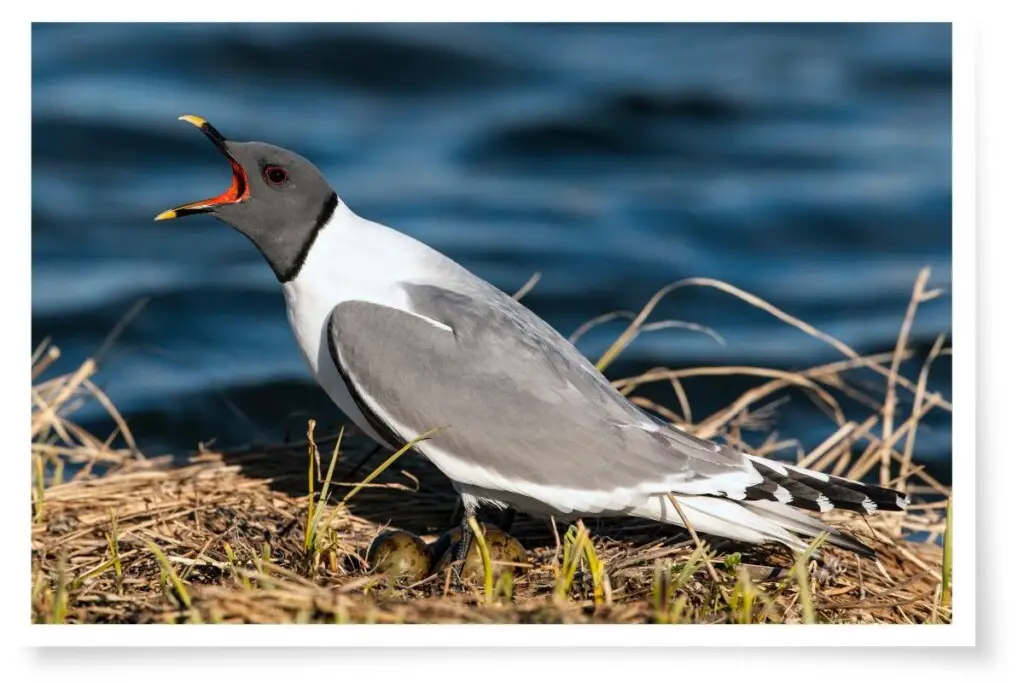
As these birds inhabit quite varied locations, their diet is also fairly diverse. During the breeding season in Alaska, they will eat spiders, larval craneflies, midges, flower flies, shore flies, and mosquitoes. They also take crustaceans, fish, birds, and even vegetation.
In Canada, they will eat snow spiders, copepods, aquatic and terrestrial beetles, larval and adult springtails, midges, craneflies, and small fishes.
In Greenland, their diet is similar to Alaska and Canada except they will also eat marine crustaceans, seal remains, and on rare occasions; birds’ eggs.
In Peru, their diet consists of fishery offal and zooplankton but not live fish. In Africa, they eat fish offal, polychaetes, crustaceans, small fishes, and cyprid larvae.
SEAGULL FACT #3

Most gull species are quite abundant, however, around 22% of the Laridae family face some form of conservation concern.
Silver Gull
Silver Gulls are widespread throughout coastal and inland areas of Australia and New Zealand. They are around 38-43 cm (1.2-1.4 ft) in length, with a wingspan of 91-96 cm (2.9-3.1 ft).

The staple of this gull’s diet is hot, deep-fried potato chips and fried fish…just kidding! Their natural diet consists of cnidarians, squid, annelids, insects, crustaceans, arachnids, small fish, frogs, birds, and mammals, as well as seeds and berries.
Silver gulls have been seen 30km offshore eating pelagic amphipods. They will also scavenge dead fish on the shoreline as seen in the image below.

Silver gulls are no strangers to stealing food from other species such as terns, cormorants, herons, and even pelicans. I have also seen these birds catching insects on the wing.
Discover the world’s Pelicans in this post here on my site.
These birds are now common in many highly populated areas and feed on refuse from rubbish dumps and garbage bins. Refuse in fact makes up 85% of their diet in Sydney, Australia.
Is It Bad To Feed A Seagull?
We know that many seagulls seem to enjoy stealing our food and will flock seemingly out of nowhere at the mere sight of human food. Should we really feed them though?

My opinion is that it is not a good idea to feed seagulls human food. They are quite capable of sourcing their own food and the food that we give them has little if any of their dietary requirements.
Most of what we feed seagulls ends up being empty filler which means they feel full and don’t eat the natural food they need to keep them healthy.
Feeding gulls also causes behavioral changes in them which can be harmful. As they have learned that the presence of humans means food, they have become less fearful of us and will approach much closer than they should. This puts them in harm’s way, leaving them vulnerable to being hit by vehicles or injured by people themselves.
Seagulls Prefer Food Touched By Humans
While researching this blog post, I was stunned to read about a study that found seagulls prefer food that has been touched by humans!
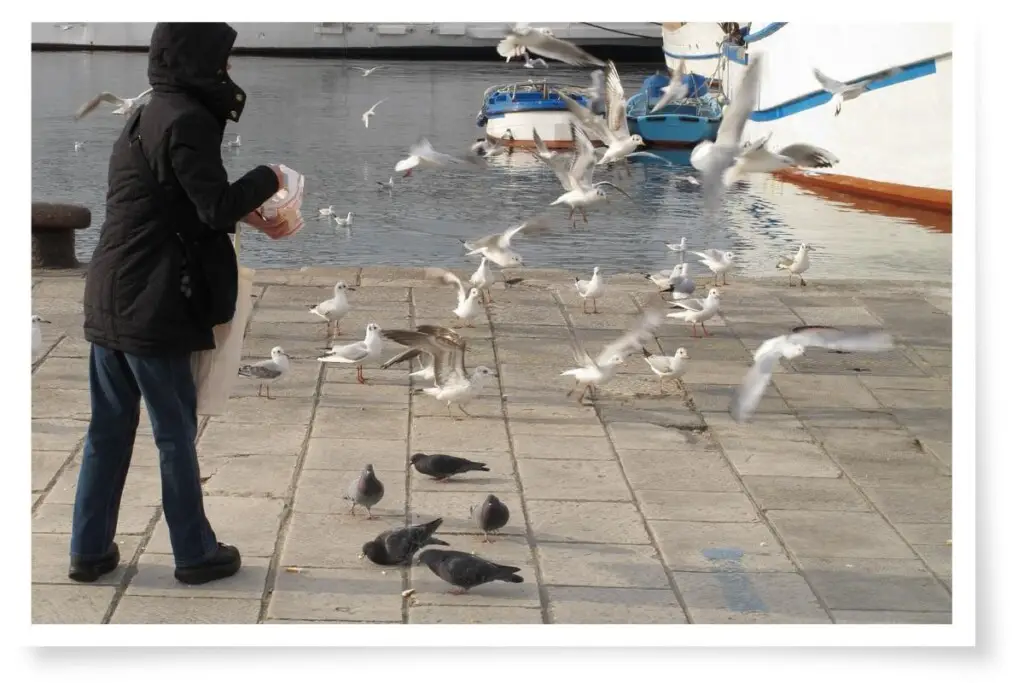
Scientists from the University of Exeter in the UK conducted an experiment where they approached individual seagulls with two buckets of wrapped flapjacks. They picked up a flapjack from one bucket and held it for 20 seconds before placing it back down. The other flapjacks were not touched.
Of the 38 gulls they tested, 79% chose the flapjack that had been touched. They also repeated the test with sponges but the gulls did not seem to have a preference when it came to those. This proved that handling by humans draws the attention of gulls to food in particular.
This to me, suggests a genetic disposition may be developing in regard to seagulls taking food from humans. Other species such as pigeons are capable of passing information down through generations so it makes sense that gulls could also be doing this. It is not good news…
References
- All bird information sourced from birdsoftheworld.org
- Seagulls prefer to steal food humans have touched, research shows – 7news.com.au
